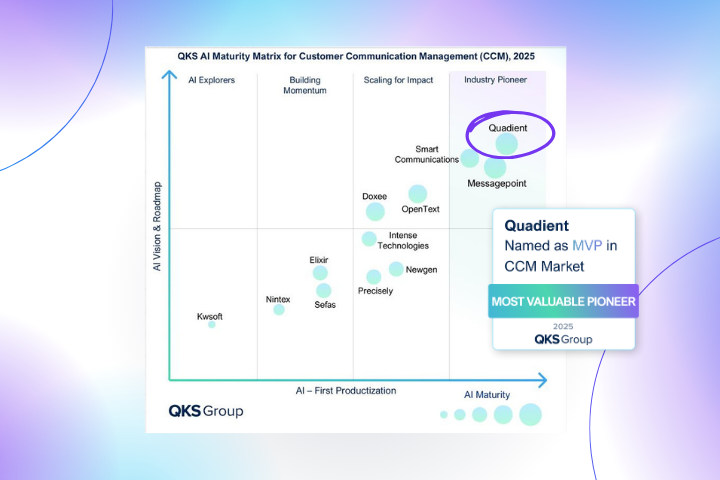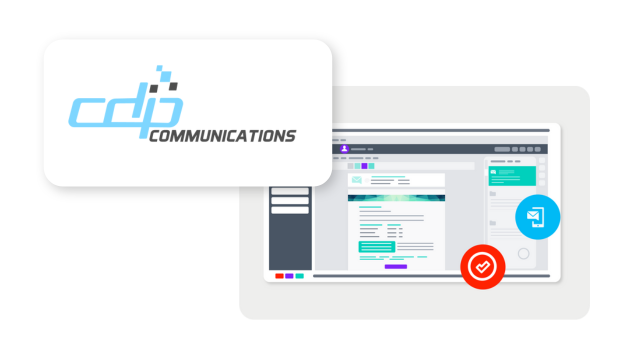
We’ve all been in a situation where our amazing idea is delayed because IT needs a little longer than we had hoped to make the bits and bytes work the way we’ve asked. But what happens when it’s more than “a little longer” – and your entire project is at risk because of resourcing bottlenecks?
Unfortunately, this scenario plays out quite often in the customer communications world, where there is one team responsible for juggling all template creation and update requests for the entire company, while keeping on top of regulatory changes. Regardless of the size of the request, when it’s threatened by IT bottlenecks, there’s a natural tendency to solve it one specific way.
The workaround – the solution you need, but not the one you deserve
How hard could it be to take matters into your own hands and develop a quick workaround? After all, we’ve all written emails and letters before. A few days spent creating a library of Word templates in a shared folder, then a quick training session with your employees, and an agreement with your local print room on who’s going to stick the stamps onto the envelopes, and your blockage has been cleared. Now, you’re all set to implement your new enhancements, with the added bonus that your communication capabilities won’t be beholden to the whims of your IT team anymore!
Sometimes, though, when it seems too good to be true… it is. You think you’ve just solved the problem, when really, you’ve created a minefield of quality and compliance problems. With no controls around branding and tone of voice, communications could be delivered that don’t meet corporate guidelines. You might be surprised how upset your brand and marketing teams get when your logo isn’t in the right place on a page, or when you’re caught addressing the customer using the number of contractions that I’ve used in this paragraph (if that’s not your official style).
And with no limitations on template usage or personalization, there’s no guarantee that your teams will even use the templates that you provided. Desktop tools are designed to be as open as possible, so there’s nothing stopping an enterprising employee from “improving” on your originals with their own, unique versions. Even if they choose to use the official ones, it’s difficult to stop your teams from changing the approved wording, putting whatever text they want into each email or letter, or even copying the all-important values and other fields into the communication incorrectly.
Quality control – the function you didn’t expect to own
The freedom created by your band-aid fix results in the formation of its own quality control team. Your audit checks, once only needed by your newest trainees, are suddenly department-wide and verging on a 100% check rate. There’s no automated way of putting those communications in front of your team leaders though, so even more manual steps get added to the process, and each of these increases the risk that the communication won’t meet the customer’s needs – either by being delivered late, by being delivered incorrectly (even team leaders make mistakes), or by getting lost in the process entirely, and never getting delivered at all.
It may be a solution, but it’s not without consequences
Get your workaround solution right, and you have a slow and inefficient process that requires more resource than you originally thought. Get it wrong, and you have customers receiving incorrect regulated communications that they’re legally entitled to make important decisions from.
Missing a word may not seem serious, but when the communication is an insurance policy and the word is “not” … well, I’m sure you get the picture (and yes, at Quadient we’ve seen this happen!).
None of the situations above end well. At best, the ROI on your project doesn’t deliver because of all the inadvertent consequences of your workaround. At worst, you’re the person hauled in front of the board to explain why your department is being investigated by the regulators, and your company logo is on-screen behind the news anchor on the latest national headlines. Sometimes, simple solutions can be horribly complicated.
Simplifying communications quality control
Reaching for the Office Suite may have unintended negative consequences, but with cloud-based SaaS customer communication services available, you can resolve your project blockage and get a solution that balances content governance with process efficiency.
Communication templates can still be defined by non-technical users, but with a full SaaS service, the content is placed onto communication layouts that are locked down and in line with your branding guidelines. Data can then be piped directly into each communication to fully personalize it, even allowing different content and imagery to be populated depending on the customer's profile. Generated communications are then automatically delivered to customers' preferred channels. Your entire communication needs can be fully automated, removing any risk of errors by your hard-working team of customer service representatives.
If you still need to manually personalize further, the content can be locked down as well, so that your colleagues are only able to edit the individual areas, words, or values that will enhance the experience, limiting the chance for errors. A handy checklist of items that need to be completed before delivering the communication can also be displayed alongside your template, ensuring an even higher level of quality.
And finally, there’s the all-important audit. A 100% quality control check isn’t needed with a full SaaS communication service, but your most valuable customers may still warrant the belt-and-braces approach. The approval flow for every template can be individually customized to route communications to the right person or team for authorization before they’re automatically delivered—eliminating the risk of the request being lost in a manual folder or email-based departmental procedure.
Move aside, Microsoft Office…
The allure of the homemade communications workaround, with its promise of rapid project results and the anticipation of full departmental control, has always been strong. Sadly, the reality never matches the vision, but fortunately, there’s a solution. With state-of-the-art quality control capabilities, Inspire Evolve offers deployment within hours, enterprise-level performance, full automation, and the ability to keep full content control within your department.
Band-aids aren’t required anymore – these days, a SaaS communication solution can deliver everything you need.
To further explore how you can simplify customer communications quality control, watch our on-demand webinar: Communicating Doesn’t Have to be Complex








